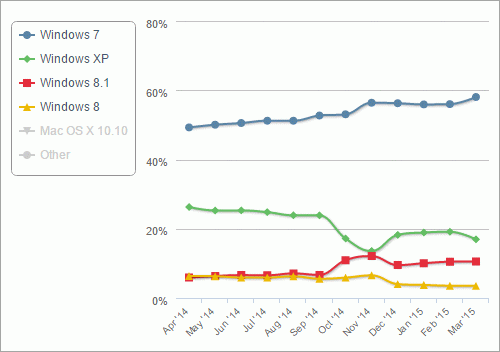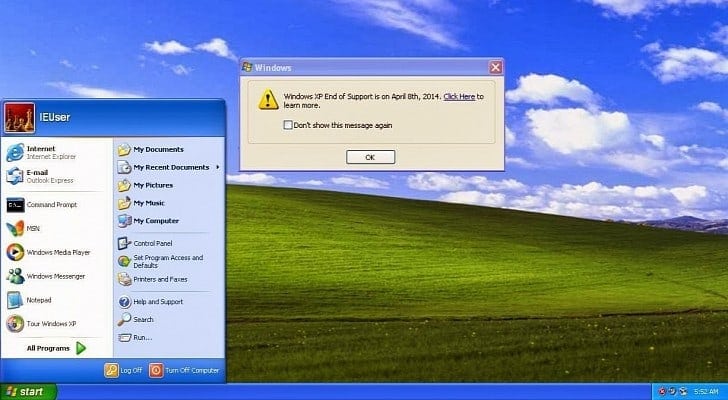It’s been a year since Microsoft ended official support for all versions of Windows XP, yet the near-14-year-old OS simply refuses to die. While Microsoft did offer corporations the option to pay a hefty sum for continued XP support, those in the consumer space have been on their own for the past 12 months.
Even then, a not-insignificant number of people have continually refused to upgrade their OS, even when the option to upgrade to Windows 7 still existed. Official support for Windows 7 has also ended, so the only option now is Windows 8.1. Unfortunately for Microsoft, their shiny new tiled OS has been surpassed in the market by the bitmap based bundle from 2001.

Using telemetric data from NetMarketShare, we can see the trend in overall OS installs over the past 12 months, with an odd anomaly in November 2014. Windows 7 sees a fairly steady increase over the 12 month interval, with a total gain of 8.77% at the end of March 2015. Over the same time, Windows XP fell 9.35% and Windows 8.x remained pretty flat with only a 1.83% gain.
If you’re still wondering what happened in November, that’s when the Windows 10 Technical Preview was released for general use. It’s entirely possible that a bunch of users upgraded to Windows 8.x as a preamble to installing Win10, but what happens after that is telling. Windows XP installs do rebound, but not up to the levels they were prior to November. In the meantime, Windows 8.1 installs drop, but once again not to their pre-November levels. Also Win8.1 surges significantly past Win8, but the whole 8.x family remains flat.
Windows 10 is coming this summer, so we can only wait and see how these numbers play out. Will the new OS, that finally marries the new features given to us in Win8.x with the features we want to keep from Win7, throw Windows XP into its final death throws? In the end, it’s somewhat ironic that Microsoft chose to end support for XP on the 8th, cause XP is still more popular then Windows 8.

